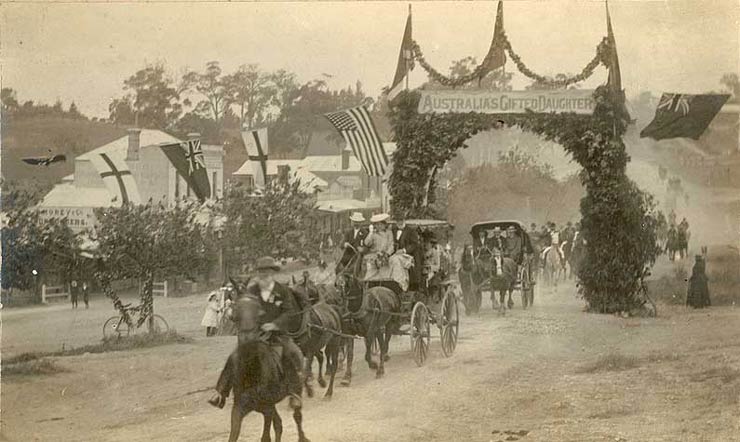 Dame Nellie Melba in a procession at Lilydale, 1902
Dame Nellie Melba in a procession at Lilydale, 1902
TLF ID R2791
This is a black-and-white photograph that shows the arrival of operatic soprano Nellie Melba (1861-1931) in a procession at Lilydale in Victoria during her 1902 tour of Australia and New Zealand. Melba is seated in a buggy at the front of the procession. The procession, which is made up of people in buggies and men on horseback, extends down the hill into the township. Melba's buggy has just passed through an archway emblazoned with the words 'Australia's Gifted Daughter'.
